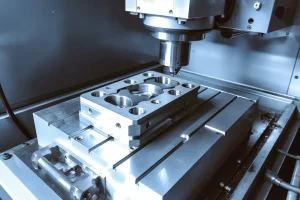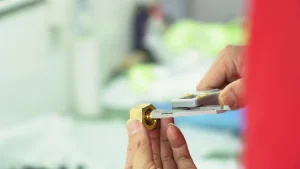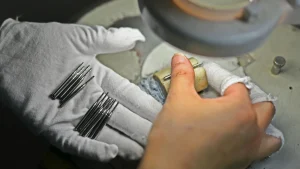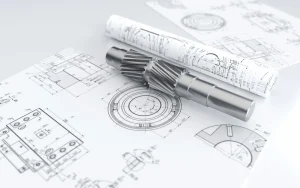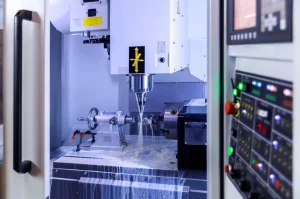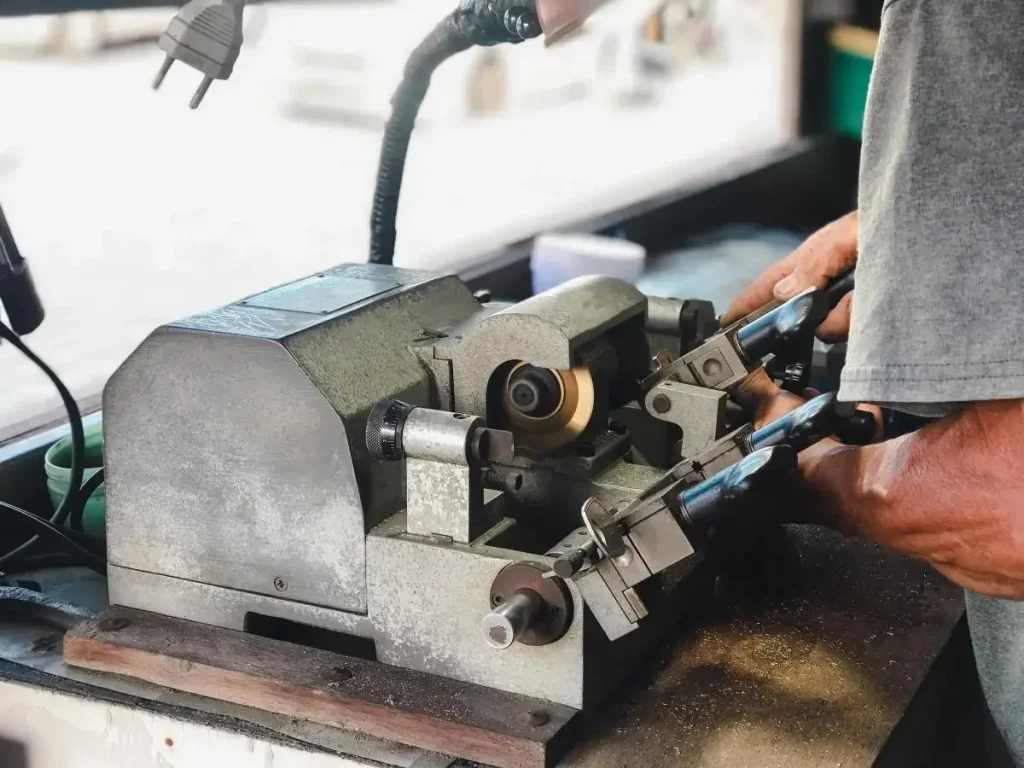
1. Preliminary preparation
Tool and material selection:
Precision parts processing selects appropriate polishing tools according to the material, shape and size of the parts, such as sandpaper, grinder, polishing wheel, etc.
Select the appropriate polishing agent, the type and particle size of the polishing agent should be determined according to the roughness of the part surface and the polishing requirements.
Part inspection:
Precision parts processing Before polishing, carefully check whether the surface of the parts has defects, such as rust, scratches, burrs, etc., and perform necessary pretreatment.
Precision parts processing
Environment preparation:
Ensure that the polishing environment is clean and dust-free to avoid pollutants such as dust and smoke from affecting the surface of the parts. For parts with extremely high precision requirements, polishing should be carried out in a dust-free room or an absolutely clean space.
2. Polishing process
Rough polishing:
The main purpose is to remove burrs, oxide layers and rough parts on the surface of parts.
Use mechanical polishing methods, such as sandpaper polishing, grinders, etc., pay attention to controlling the polishing force and speed to avoid damage to the parts.
Intermediate polishing:
Further smooth the surface of the parts and remove the traces left after rough polishing.
Chemical polishing methods such as electrolytic polishing and pickling can be used, but it is necessary to control the polishing time and temperature to avoid excessive polishing that may damage the surface of the parts.
Fine polishing:
Make the surface of the parts smoother and achieve the expected accuracy and roughness.
Use optical polishing methods such as ultrasonic polishing and magnetic grinding, pay attention to controlling the polishing accuracy and efficiency to ensure the surface quality of the parts.
3. Operation skills
Prevent scratches:
The surface of precision parts is usually fragile and easy to be scratched or bruised. During the polishing process, be careful and avoid using too rough tools or techniques.
When storing and transporting precision parts, appropriate protective measures such as foam pads, soft paper, etc. should be used to ensure that the surface of the parts will not be scratched or bruised.
Regular maintenance:
The tools and materials used in the polishing process of precision parts processing may wear or age, so these tools and materials need to be maintained and replaced regularly.
Check the performance and quality of tools and materials regularly, and deal with and replace them in time if there are any problems.
Grasp the details:
The size and accuracy of precision parts are usually small, so it is necessary to pay great attention to the details during the polishing process.
When choosing a polishing agent, it is necessary to choose a suitable polishing agent according to the properties of the part material and the selection principle of the polishing agent.
When processing details, it is necessary to master the balance between precision and efficiency to avoid damage to the surface of the parts due to excessive processing.
4. Subsequent processing
Cleaning and maintenance:
After polishing, the parts should be thoroughly cleaned to remove the polishing agent and residue on the surface.
Coat the surface of the parts with anti-rust oil or take other maintenance measures to extend the service life of the parts.
Quality inspection:
Precision parts processing performs quality inspection on the polished parts to ensure that the indicators such as surface finish, roughness and precision meet the requirements.
If necessary, rework or re-polishing can be carried out.

